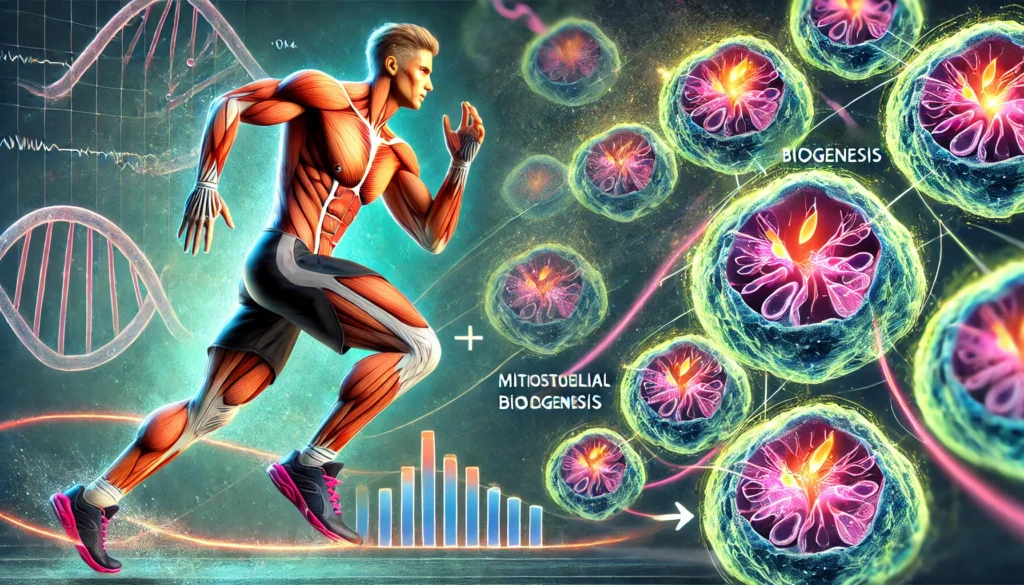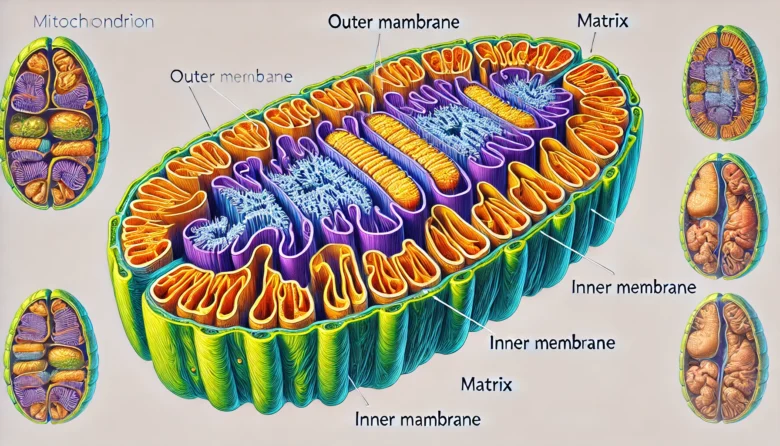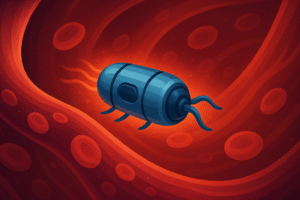Fun Fact: Several thousand mitochondria work in a single heart muscle cell, whereas up to 100,000 work in a mature egg cell. Relative to their weight, they produce 10,000–50,000 times more energy than the sun—energy in the form of adenosine triphosphate (ATP).
When you think about energy production, you might picture power plants or solar panels, but did you know your body has its own tiny powerhouses? These microscopic structures, called mitochondria, are essential for producing the energy that powers everything we do, from thinking to running. In this blog, we’ll explore the critical role of mitochondria in cellular energy production and why they’re often referred to as the “power plants” of our cells.
What Are Mitochondria and Why Are They Important?
Mitochondria are small, double-membraned structures found in almost all eukaryotic cells (cells with a nucleus). These mighty organelles are responsible for generating adenosine triphosphate (ATP), the molecule that carries energy within cells. Think of ATP as the “currency” of energy that cells use to perform essential functions like muscle contraction, nerve signalling, and molecule synthesis.
To put it simply: No mitochondria, no energy.
However, mitochondria have additional responsibilities beyond energy production. They also help regulate the cell’s metabolism, signal apoptosis (programmed cell death), and play a part in maintaining cellular health by fighting off oxidative stress. Without healthy mitochondria, cells would struggle to function, and the effects on the body would be severe.

How Do Mitochondria Produce Energy?
The energy production process in mitochondria is quite fascinating. It occurs through a series of reactions known as cellular respiration, which can be broken down into three main stages:
Glycolysis: This first step occurs in the cell’s cytoplasm, where glucose (a sugar molecule) is broken down into pyruvate. While glycolysis itself does not occur inside the mitochondria, it sets the stage for what comes next.
The Krebs Cycle (Citric Acid Cycle): Inside the mitochondria, pyruvate undergoes several chemical reactions to produce electron carriers (NADH and FADH₂), which are crucial for the next step. The Krebs Cycle also produces a small amount of ATP.
Oxidative Phosphorylation (Electron Transport Chain): This final step takes place in the inner mitochondrial membrane. The electron carriers produced in the Krebs Cycle transfer their electrons to the electron transport chain, which generates a flow of protons across the mitochondrial membrane. This creates an electrochemical gradient that powers the production of ATP. It’s a bit like a water wheel – as protons flow back into the mitochondria, they spin molecular “wheels” that produce ATP.
Fun fact: The mitochondria’s ability to produce energy in this way is so efficient that it can generate about 30-32 ATP molecules from a single glucose molecule!
Real-World Example: Mitochondrial Disorders
When mitochondria fail to work efficiently, it can result in various serious health conditions referred to as mitochondrial disorders. These disorders affect the body’s ability to produce energy, often leading to symptoms like muscle weakness, neurological problems, and heart or liver disease.
A notable example is Leigh syndrome, a rare and progressive disease that impacts the central nervous system due to faulty mitochondrial function. In cases like this, cells can’t produce enough energy, leading to severe developmental and health complications. While mitochondrial disorders are rare, they underscore just how critical these organelles are for maintaining normal bodily functions.
Mitochondria and Exercise: A Perfect Partnership
Ever wondered why exercising makes you feel more energetic over time? The answer lies in mitochondria. When you engage in physical activity, your body responds by producing more mitochondria in your muscle cells. This process is called mitochondrial biogenesis and is part of why regular exercise can enhance stamina and endurance.
For example, long-distance runners tend to have more mitochondria in their muscle cells compared to people who lead a sedentary lifestyle. More mitochondria mean more energy, which is why athletes are able to sustain intense physical activity for longer periods.
Mitochondria and Aging: Is There a Link?
As we age, our mitochondria can start to deteriorate. Scientists have observed that mitochondrial function declines over time, leading to decreased energy production. This decline may contribute to age-related conditions such as muscle weakness, cognitive decline, and even diseases like Alzheimer’s.
Interestingly, researchers are exploring ways to protect and even enhance mitochondrial function as a potential avenue to delay the ageing process. For instance, substances like coenzyme Q10 (CoQ10), a compound involved in the electron transport chain, are being studied for their potential to boost mitochondrial performance and combat the effects of aging.
Conclusion: The Unsung Heroes of Cellular Health
Mitochondria might not be something we think about every day, but it is vital to every action our bodies take. From generating the energy to help us move and think to play a role in ageing and exercise, these tiny power plants keep us going in ways we’re only beginning to understand fully.
So the next time you’re feeling full of energy after a workout or simply enjoying a moment of mental clarity, remember that your mitochondria are hard at work, keeping the wheels turning. The more we learn about these fascinating organelles, the more we realize just how essential they are to life itself.
Author’s Note
As someone who loves diving into the science behind how our bodies function, I hope this article sparked your curiosity about mitochondria. It’s incredible how something so small can have such a big impact on our energy levels and overall health!
G.C., Ecosociosphere contributor.
References and Further Reading
- Mitochondrial Disorders Overview
- How Mitochondria Produce Energy
- Mitochondria as multifaceted regulators of cell death – Genes Genomics Genetics Epigenetics and the EnvironmentGenes Genomics Genetics Epigenetics and the Environment. http://genewhisperer.com/2019/10/29/mitochondria-as-multifaceted-regulators-of-cell-death/
- Feher, J. (2012). ATP Production II. Elsevier EBooks. https://doi.org/10.1016/b978-0-12-382163-8.00021-9
- Natural Mitochondria Targeting Substances and Their Effect on Cellular Antioxidant System as a Potential Benefit in Mitochondrial Medicine for Prevention and Remediation of Mitochondrial Dysfunctions




